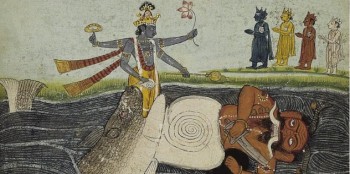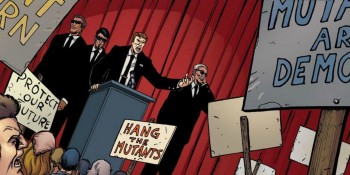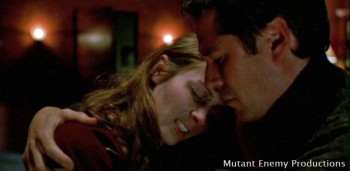In the past week, Bosnia and Serbia have been hit by the heaviest rain in the history of recorded weather measurements there. Throughout Southeast Europe, at least 47 people are dead due to flooding. This ongoing tragedy is a reminder of the sheer, devastating power of nature, and water in particular.
Massive flooding like that in Europe is, thankfully, an aberration rather than a daily occurrence for most people. Nonetheless, smaller scale excesses of water can have frequent, significant impacts.
A few days ago around my home of Harrisburg, Pennsylvania, we had a torrential downpour. I took the bus into town, and in the time I waited at the bus stop, my pants were completely soaked through despite my umbrella. The streets were filling up with water and the bus had to turn around at one point to take a different route. Our basement still has a small pool of water where the floor is lowest. The total time of the rainstorm? About 3 hours.
Of course, when you’re talking about flooding, the important factor is intensity, rather than just duration. It can rain for most of the year without flooding, so long as the rain is light. After the rain tapers off, the ground still has to soak it all in and deal with it. By then, houses have been destroyed, property has been ruined, and lives have been lost.
In 2005, the city of Mumbai was brought to a standstill when it got 39 inches of rainfall over the course of 24 hours. If a whole metropolitan area can be shut down by a single day of heavy rain, how about seven? Nine? Forty days? Given the frequency of small floods and the epic scale of large ones, it is no surprise the flood has pervaded world mythology since time immemorial.
In Judeo-Christian-Muslim religious mythos, a fellow named Noah is told to build a big boat because God is going to kill off the human race and Noah alone is worth saving. And his kids. And some animals. So they pile on the boat and weather the 40-day-long deluge, eventually landing and interpreting a rainbow as God’s promise never to destroy the world with a flood ever again. Cities, islands, and river lands, sure, but never the whole world. We all know this one because it’s ingrained in Western popular culture through retellings and satire, such as the movie Evan Almighty, even if you’ve never been to Sunday School.
Dig a little deeper and you’ll find a lot of other cultural traditions that have a remarkably similar motif. For instance, the Sumerians have a story about a man named Atra-Hasis (“exceedingly wise,” but you can also call him Utnapishtim; oh wait, that’s even harder to pronounce). In their version, the chief god, Enlil (“Lord of the Storm”), gets sick of mankind because they breed too quickly and spread disease, so he decides to flood them out. The god of freshwater and our old friend, Enki (maybe “Lord of Life”), is bound to secrecy, but he cheats and tells Atra-Hasis, a mortal, about the plan. Atra-Hasis builds a boat out of his house and loads all his possessions, family, and workmen into it. The flood goes on for seven days before he lands safely.
Enlil is pissed because Enki told his secret to a human, so Enki makes Atra-Hasis into an immortal as a sort of workaround; that way, he no longer has broken his oath. Thousands of years later, Atra-Hasis tells his story to Gilgamesh, who had sought him out seeking the secret of immortality.
Another similar story is that of the Greek Deucalion, who was the son of Prometheus. At one point, Zeus decides to wipe out the humans with a flood, but Deucalion and his wife Pyrrha (“flame colored,” as her hair), who was coincidentally the daughter of Pandora (the one with the box, not the Internet radio station), are told to build a “chest” and float out the nine-day-long deluge in it (however that was supposed to work). When they land, they sacrifice to Zeus and so are allowed to get a wish. They take up stones and throw them into the air, where they become men and women, thus circumventing the whole “repopulate the earth via incest” thing common to these stories.
Then there’s the Hindu story, found in the Puranas (Sanskrit: “of ancient times”), of Manu the mortal and Matsya, avatar of Vishnu. Manu, the first man, was a great king. At one time, he found a small fish being swept downstream to the ocean who begged him for help. Manu took him and put him in a tank. The fish outgrew it, so Manu put him in a bigger one, and so forth, until he had to put him in a river, and eventually in the ocean. At that point, the fish reveals himself to be an avatar of Vishnu (Matsya is Sanskrit for “fish”), and warns Manu that the world will be flooded, promising to help him get through the ordeal safely. Manu builds a boat and takes his family and some seeds and animals on board. He waits out the storm and makes it to land with Matsya’s help, then goes on to found the human race. Of course, he lived, like, 306 million years, but that’s how things go in Hindu mythology.
In China, we get a different kind of flood story — one that’s at least somewhat based in recorded history. Humanity wasn’t wiped out, but the country was fighting floods for centuries. Floods ravaged the fields and cities of China until the emperor hired a man named Gun to organize the efforts to push it back. Gun tried to use sandbags and blockades to keep the water out, but after a decade, his efforts failed, so the emperor killed him — or maybe Gun transformed into a dragon or something. Anyway, Gun’s son, modestly named Yu the Great, takes over the work and manages to get the flood under control by building dykes and/or fighting nine-headed snake monsters. The emperor is so impressed that he appoints Yu his successor, thus founding the Xia dynasty.
In Mesoamerica, an unnamed Tlapanec man survives the great flood alone … except for his dog. Afterward, it doesn’t seem like there’s much hope for repopulating the earth with humans, at least until the man discovers his dog turns into a woman while he’s away during the day. While definitively creepy, the man knows then what he has to do.
So I hope you’ve enjoyed this romp through some of the many cultural stories of flooding. In light of the real-world impact of rising waters even as we speak, I for one hope that we can all find courage in the stories of our cultural traditions to confront the harsh realities in these and other disasters. Best wishes to you all.









